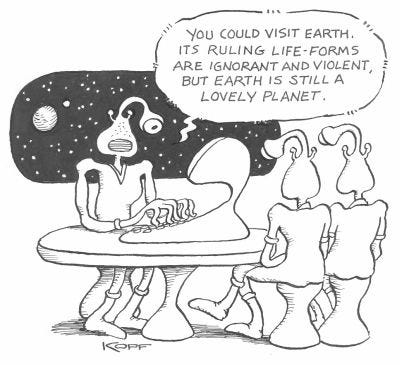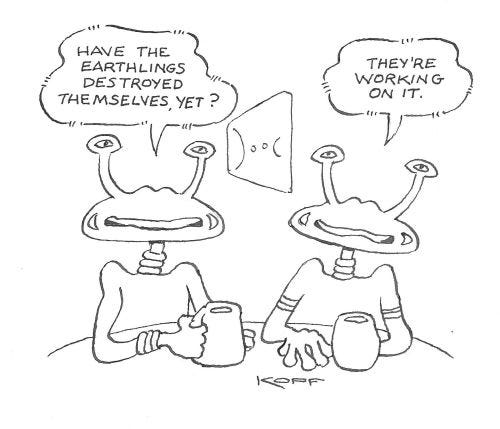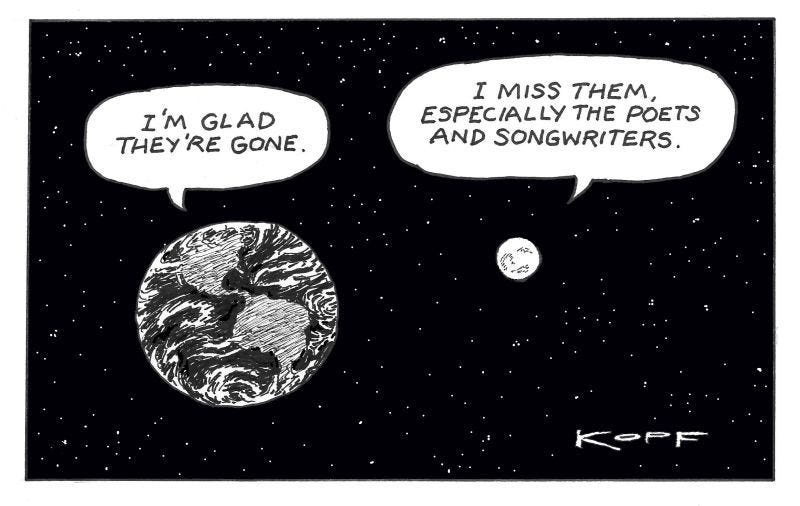Exploring the Unknown: A Journey Beyond Our World
Written on
Chapter 1: The Enigma of Extraterrestrial Life
The question of what exists beyond our planet has intrigued humanity for decades. Back in the 1950s, my elder brother often remarked on the absurdity of aliens in films and TV shows resembling humans, given the vast diversity of life on Earth—from insects to crustaceans. The limited special effects of that era often led filmmakers to simply dress actors in quirky costumes to depict alien life forms. It’s no wonder that Captain Kirk from Star Trek found himself romantically interested in aliens who looked like colorful versions of humans.

I find it fascinating that no matter how much we uncover about our universe, there is always more waiting to be discovered. When Dr. Robert Williams directed the Hubble telescope toward a seemingly empty region of space, an astonishing number of previously unseen galaxies came into view. Now, with the capabilities of the James Webb telescope, even more remarkable images of the cosmos are being captured.
On a subatomic scale, elemental particles—such as gluons and quarks—serve as the fundamental components of atoms. These particles behave in unpredictable manners; they can appear and vanish, exist in multiple locations simultaneously, and may not even possess any size at all. This complexity suggests that even the most brilliant atomic scientists have yet to fully grasp these minuscule entities, hinting that even smaller particles might still lie undiscovered.

At around twelve years old, I encountered Richard Matheson’s novel, The Incredible Shrinking Man. In the story, a man alone on a sailboat is affected by a radiation cloud, causing him to shrink. As he becomes the size of an insect, he faces the terrifying challenge of defending himself against a black widow spider. Ultimately, he shrinks into a seemingly habitable subatomic world, introducing me to the concept of hidden realms within our own.
During the “space race” era, narratives of alien encounters, such as The Day the Earth Stood Still (1951) and Invasion of the Body Snatchers (1956), often served as allegories reflecting the anxieties of the Cold War. We were bombarded with reasons to feel uneasy about extraterrestrial invaders.
A memorable twist on the alien visitation trope appeared in the Twilight Zone episode "The Invaders," which was nearly devoid of dialogue. This episode featured Agnes Moorehead as an elderly woman living alone in a rustic cabin, who finds herself under attack from tiny humanoid beings wielding ray guns. With only a broom and an ax, she fights back against these diminutive foes, ultimately defeating one and destroying their spaceship, which is humorously labeled with “U.S. Air Force Space Probe ?1.” Interestingly, this episode was also penned by Richard Matheson.

Many years ago, my science fiction cartoons found a home in publications like Omni and The Magazine of Fantasy and Science-Fiction. Recently, my alien-themed art has been repurposed to highlight the ongoing destruction of our planet. It’s an ironic twist, indeed.

Suggested Listening
To further immerse yourself in the theme of space and aliens, check out the following songs:
"The Purple People Eater" by Sheb Wooley: A whimsical take on alien encounters.
"Mr. Spaceman" by The Byrds: A catchy classic about space travelers.
"Spaceman" by Harry Nilsson: A melodic reflection on the cosmos.
Click here to subscribe to MuddyUm’s newsletter, ‘The Real Dirt.’